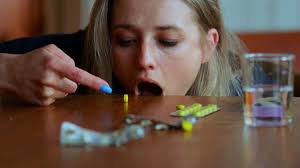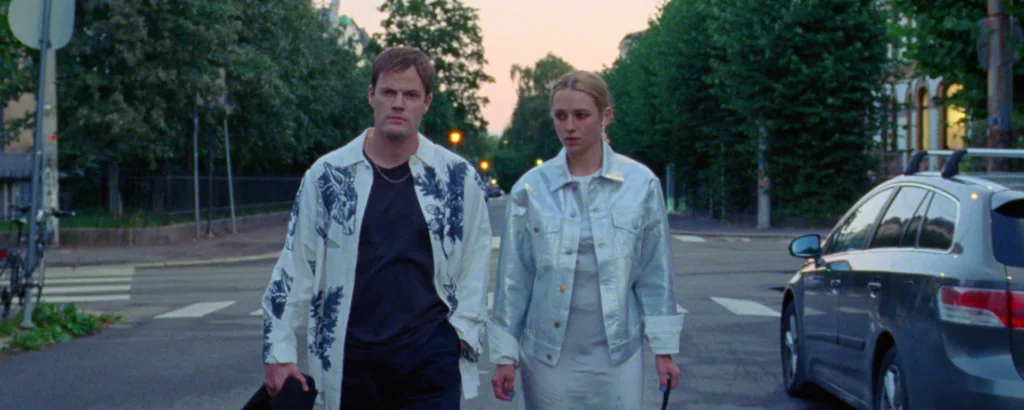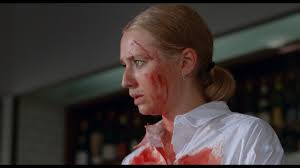Writer/director Kristoffer Borgli’s broadly handled – some would say SICK! – black comedy has some inspired moments of tasteless John Waters-style humor and a committed lead performance. Backed by some of the same people who were behind the superb Norwegian movie “The Worst Person in the World,” and also set in Oslo, “Sick of Myself” is more worthy of the first movie’s title even as it gradually loses steam in its second half. However, you could do worse if you can take moments of extreme gore and disfigurement – the movie succeeds more as a horror movie than a piece of social (or social media) satire.

The story centers on a nauseatingly self-obsessed couple, Thomas (Eirik Sæther) and Signe (Kristine Kujath Thorp). Thomas, about to have fifteen minutes of fame, specializes in tableaux of stolen furniture, while Signe is a barista, a little lower on the social totem pole. We first encounter the couple at a fancy restaurant, where Thomas, with Signe’s help, runs off with a $2,300 bottle of champagne!

When a pedestrian, bitten in the neck by a dog, stumbles into Signe’s coffee shop, she is the only one to come to the woman’s aid. Walking home with her shirt covered in the woman’s blood, she, not surprisingly, grabs the attention of her fellow pedestrians in a way she never experienced before. Something inside of her changes, and later that day, at a party for Thomas in which he has prepared an elaborate speech, she steals his thunder by pretending to be allergic to nuts and simulating anaphylactic shock.
By now, it’s clear to Signe that feigning illness is the only way to be noticed in Thomas Oslo’s celebrity world (he often pretends she is his sister!). So, when she reads about a recalled Russian anti-anxiety medication called Lidexol, which causes horrific side effects – skin rashes that eventually transform into permanent scars – she has no problem getting her dealer to procure them on the internet. Soon, she takes them in enormous quantities with the desired dermatological effects.

It is at this stage that the movie’s aspirations diverge. The satire begins to gradually fall flat, especially when we are treated to scenes at a fashion shoot for a magazine that showcases unconventional – read damaged – beauty (comedic asides involving a blind woman are badly misjudged). On the other hand, Borgli’s handling of Signe’s narcissistic implosion and Thorp’s always intense, always believable performance leave us wanting more.
The pat ending, a disservice to everything that went before, tries to integrate the social and the personal without shedding light on either one.


















